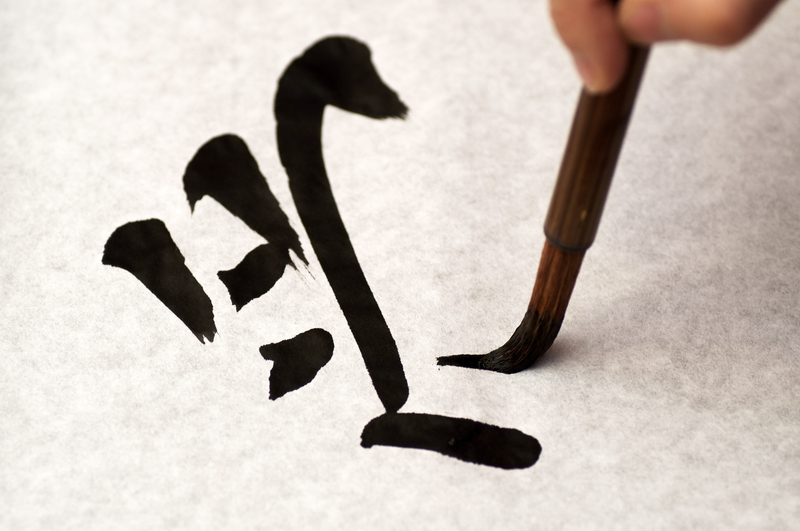Discover New Methods for Plant Pot Disposal
Looking for innovative ways to dispose of plant pots? Whether you are a gardening enthusiast or just someone with a few empty containers, learning about new methods for plant pot disposal can make a big difference to the environment and your storage space. This comprehensive guide explores modern, eco-friendly, and creative solutions for getting rid of old or unwanted plant pots, so you can feel good about your gardening sustainability.

Why Do We Need to Rethink Plant Pot Disposal?
Traditional plant pots, especially those made from plastic, contribute significantly to environmental pollution. Many recycling centers don't accept them due to the type of plastic used and contamination from soil. On the other hand, biodegradable pots and pots made from innovative materials offer fresh alternatives for plant pot disposal that minimize waste and environmental impact.
Environmental Impact of Conventional Plant Pots
- Plastic Waste Accumulation: Most plant pots are made from #5 polypropylene plastic, which is not easily recyclable. As a result, millions end up in landfills each year.
- Microplastics and Pollution: When thrown away, plant pots can break down into microplastics, contaminating soils and waterways.
- Lack of Bio-degradability: Conventional pots can take hundreds of years to decompose, making plant pot recycling a significant environmental challenge.
New, Environmentally-Friendly Methods for Plant Pot Disposal
Eco-conscious gardeners now have several sustainable methods for plant pot disposal. Let's explore some of the innovative options available:
1. Plant Pot Recycling Programs
- Garden Center Take-Back Programs:
Many garden centers and nurseries offer take-back programs for used pots. Ask your local garden store if they participate in a pot recycling scheme. These programs ensure old pots are properly processed and reused whenever possible. - Municipal and Community Recycling:
Some local councils provide specialized recycling bins for hard plastics, including plant containers. Check with your community's recycling guidelines.
Always rinse pots thoroughly and remove any soil before recycling, as contamination can prevent proper processing.
2. Reuse and Repurpose Plant Containers
Don't rush to get rid of your plant pots! Discover creative ways to reuse or upcycle them around your home and garden:
- Seed Starters: Small pots are perfect for starting new plants from seeds or cuttings.
- Organizer Solutions: Use them to store garden tools, craft supplies, or small household items.
- Decor and Art Projects: Decorate pots with paint or fabric for unique garden ornaments or indoor decor.
- Donation: Give away extra pots to schools, community centers, or neighbor gardeners who might appreciate them.
_Tip:_ Always check if your pots are still in usable condition before disposing of or recycling them.
3. Switching to Biodegradable and Compostable Options
-
Peat Pots and Paper-Based Containers:
These decompose naturally in the soil, making them an excellent "zero waste" alternative for seedlings. -
Coir Pots:
Made from coconut fiber, coir pots are compostable and promote healthy root growth. -
Innovative Bioplastics:
Some companies now produce plant pots from corn starch or other bioplastics that break down over time in compost.
By switching to biodegradable plant pots, you eliminate disposal concerns entirely.
4. Community Swap and Sharing Initiatives
Pooling resources within the community is a great way to reduce waste. Organize a plant pot swap event with neighbors or local gardening clubs. Participants can exchange unwanted containers, keeping pots in use and out of landfills.
- Community tool libraries and garden exchanges often welcome donations of gently used pots.
- Online platforms like Facebook Marketplace, Freecycle, and Nextdoor offer ways to give away or exchange free pots locally.
5. DIY Projects: Give Old Pots New Life
Transforming old plant pots into something new extends their life and encourages creativity. Here are some inspiring project ideas:
- Outdoor Lighting: Turn pots upside down, add string lights, and create whimsical garden lanterns.
- Planter Towers: Stack pots of different sizes to build vertical gardens for herbs or flowers.
- Bird Baths and Feeders: Large clay pots can be repurposed as bases for bird baths or food trays.
- Kids' Crafting: Pot painting and decoration activities teach children the value of upcycling.
Tips for Responsible Plant Pot Disposal
- Clean Thoroughly: Remove all soil, roots, and plant debris before recycling or donating pots.
- Check Resin Codes: Look for the resin identification number (usually a number inside a triangle on the bottom) to determine recyclability.
- Prioritize Reuse: Before discarding, always consider whether a different use can be found for the pot.
- Avoid Burning: Never burn plastic pots, as this releases toxic chemicals into the air.
The Future of Sustainable Plant Pot Disposal
Sustainability is at the forefront of modern horticulture. Companies are investing in eco-friendly plant pot alternatives using recycled plastics or plant-based materials. Growth in compostable plant pot production and closed-loop recycling systems are vital trends moving forward.
Emerging technologies include:
- Returnable Pot Systems: Customers return pots to the nursery after transplanting, which are then sanitized and reused.
- 3D-printed Recycled Pots: Startups are developing new pots from consumer plastic waste using 3D printing technology.
Challenges and Solutions
Despite progress, challenges remain. Contamination from soil, plant labels, or mixed plastics can prevent successful recycling. Increasing public awareness and simplifying recycling guidelines are essential steps.
Frequently Asked Questions (FAQ)
Can plastic plant pots be recycled?
It depends on your local recycling facilities. Not all centers accept plastic pots. Check for a number "5" (polypropylene) on the bottom, then confirm with your municipal guidelines or return them to garden centers that offer recycling programs.
What should I do with cracked or broken clay pots?
Broken clay pots can be reused as drainage material in the bottom of new pots or in garden beds. Larger fragments are also perfect for mosaic art or as stepping stones. If disposal is necessary, check with your municipal waste center regarding ceramics recycling.
Are there biodegradable alternatives to plastic plant pots?
Yes! Options include peat pots, paper fiber pots, coir pots, and pots made from compostable bioplastics. These decompose naturally and support a circular gardening approach.

Conclusion: Embrace New Methods for Plant Pot Disposal
The world of plant pot disposal is rapidly evolving. From innovative recycling programs to creative upcycling and biodegradable alternatives, there are now more ways than ever to minimize environmental impact while enjoying your gardening hobby. Make a conscious choice to explore and share these new methods for responsible plant pot disposal. Each small step--whether it's recycling, donating, or choosing sustainable materials--builds toward a greener future for our gardens and the planet.
Key Takeaways on Plant Pot Disposal Methods
- Always consider recycling and participating in local take-back programs first.
- Upcycling and creative reuse can prolong the lifespan of pots and introduce fun, decorative opportunities.
- Switch to biodegradable plant pots for an eco-friendly, zero waste solution.
- Encourage your community to participate in pot swaps, donations, and sharing initiatives.
- Stay informed about new trends in sustainable gardening and plant pot design.
For more guides on eco-friendly plant care and innovative gardening solutions, stay tuned to our blog. Together, we can make responsible plant pot disposal the new standard in sustainable living!